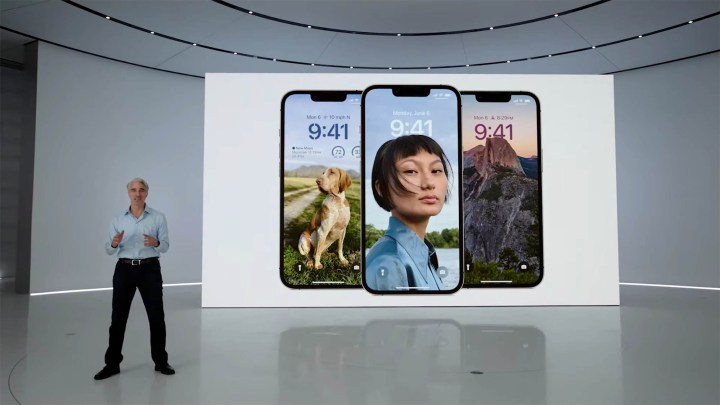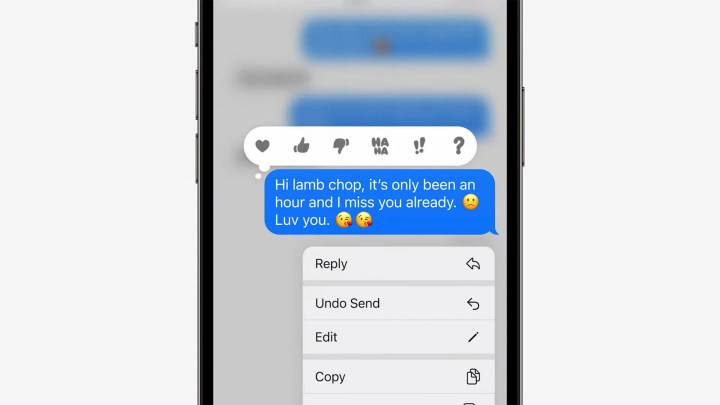Apple announced iOS 16 at WWDC on June 6, 2022. There, the company shared all the main crowd-pleasing features alongside its iPadOS 16 and MacOS Ventura previews. A developer preview is currently live, with a public beta going online later in July. Of course, not all iOS 16 features will be made immediately available for testing (or even at the release of iOS 16, based on what we’ve seen with iOS 14 and 15), but iOS 16 is well underway as the next big update for your iPhone.
After the developer previews and betas run their course, Apple will release the finalized public version of iOS 16 around September or October, usually around the same time as the next iPhone model. Here’s a quick look at everything we expect from the update.
What phones will run iOS 16?
Apple is known for supporting its iPhones for extended periods compared to Android rivals. The Pixel 3 and 3a, for example, won’t be getting Android 13 this fall, while the similarly aged iPhone X and XS are confirmed to get iOS 16.
iOS 15 is currently supported on all iPhones from the iPhone 6S and on. With iOS 16, the iPhone 6S and 7 are being put to pasture. Apple will support newer iPhones from the iPhone 8 and second-generation iPhone SE, all the way up to the iPhone 13 (plus the iPhone 14 series when it comes out this fall). You’re almost certainly not getting every feature on older iPhones, but it’ll be good enough to chug along another year.
What’s new in iOS 16?

iOS 16 is a significant iOS update, with immediately visible design changes, quality of life additions, under-the-hood improvements, and more. Apple’s lead feature here is the new lock screen. It’s what you see when you look at an iOS 16 device, and it steals some of Google’s customization thunder to boot. Updates to Messages will please everyone, while changes to Spotlight and Safari will provide more power to those who want them. Apple will also dive into the Buy Now Pay Later market with Apple Pay Later, while a new Safety Check feature sees the company pivot back towards being socially responsible.
“iOS 16 is a big release with updates that will change the way you experience iPhone,” said Craig Federighi, Apple’s senior vice president of Software Engineering. “We have reimagined how the Lock Screen looks and works with exciting new features that make it more personal and helpful, introduced iCloud Shared Photo Library for families, streamlined communication through new capabilities in Messages and Mail, and harnessed enhanced intelligence with updates to Live Text and Visual Look Up.”
New lock screen and notifications

The face of iOS 16’s changes will be the lock screen changes, and those are spectacular. They add a touch of personalization to the iPhone’s lock screen, with support for new-found interactive widgets and live lock screen notifications.
It’s a really meaningful update. Apple will offer a selection of colors and fonts for your lock screen, and the clock will interact with the image so that it appears to be behind it. Everyone’s lock screen will, for the first time, look a fair bit different.
It’s not just a customization-only update — the new lock screen will also see itself tied to the Focus mode features Apple introduced with iOS 15. This means if you’re in your gaming, personal, or work Focus, you can assign wallpapers and lock screen widgets to each mode. It’s a more thoughtful application of customization that recalls the profiles you’d see in now-ancient feature phones. As for Focus mode itself, it’s now going system-wide. This means apps like Chrome and Safari will now hide distracting websites from you, possibly sherlocking extensions that make it their business to do so.
With the new iPhone 14 Max rumored to be 6.7 inches in place of a mini-iPhone, Apple’s main iPhone line will all be over 6 inches for the first time. A change to iOS 16 sees notifications now scroll up from the bottom in acquiescence to the reality of using big phones.
iMessage improvements

Apple’s iMessage picks up a few user points as well. The company is rolling out “undo send” and “edit message” capabilities, two new features that’ll let you take control of your message in a small 15-minute window after you send it. Both are exactly what they sound like, with one withdrawing a message after it has been sent, and the other allowing for tweaks to it. The short time window prevents users from using this feature for mischief or malice, although it’s a lot less than what WhatsApp offers.
Apple is also improving how the Messages app works with Android phones. It’s killing off Tapback spam in cross-platform group messages and displaying these reactions properly. There’s still no RCS for enhanced cross-platform messaging, but at least there’s one less annoyance for iOS and Android group chat users to deal with.
Finally, Apple is including more sharing features with SharePlay so users can watch movies and listen to music together while using the Messages app to chat — like some sort of private livestream.
New accessibility tools debut

Apple has announced some of the accessibility features it plans to bring later in the year. It’s adding Door Detection, a feature that’s aimed at helping users with impaired vision navigate around their environment. It’ll use the lidar scanner that Apple introduced on the iPhone 12 Pro to help detect doors, share the state of the door (such as open or closed), as well as how to interact with the door. The Door Detection feature will also be able to read out text around the door, useful for conveying information like room numbers and accessibility entrances.
Similar to Google Pixel phones, you’ll be able to use Live Captions to follow along with videos if you’re hard of hearing. “Users can follow along more easily with any audio content — whether they are on a phone or FaceTime call, using a video conferencing or social media app, streaming media content, or having a conversation with someone next to them,” Apple explained.
Everything else in iOS 16

Aside from the headlining features, there are also several small features coming in iOS 16 that haven’t gotten nearly as much of the spotlight. You are now able to use Face ID horizontally and not just vertically on select iPhones. A new tool will allow people at risk from domestic abuse to quickly curate the content and permissions they share with their partner’s accounts, as well as other devices that they may be logged into. CarPlay sees a powerful update that makes it more all-encompassing, but you won’t see it until late 2023.
Apple’s in-box apps also see updates here. Most notably, Photos plugs into a new iCloud Shared Photo Library feature, aimed at helping families sync all their images between their Apple devices. It’s useful for holidays and day trips alike. Maps picks up multi-stop navigation with up to 15 stops per trip, while Safari kills off passwords and introduces more secure passkeys. Health gets medication tracking, and a new Fitness app is being made available for those who don’t have Apple Watches but still want to track basic activity.
What about the iPhone 14 and iPhone 14 Pro?

Apple is expected to launch an iPhone 14 and iPhone 14 Pro with iOS 16 in or around September. There, the company will unveil a large ‘regular’ iPhone for the first time since the XS and drop the ‘mini’ iPhone as it reacts to market demand. Expected updates include the demise of the notch and the inclusion of larger 48MP cameras on the Pro iPhones, while the non-Pro iPhones will pick up the 120Hz refresh rate displays that launched exclusively on the 13 Pro and 13 Pro Max last year.
The iPhone 14 was rumored to come with an always-on display, and code for the feature has been discovered in iOS 16. It was previously reported to come for the iPhone 13 series but is now said to be exclusive to the iPhone 14 and 14 Pro. Always-on displays are a staple of Android flagships, allowing for at-a-glance access to notifications, time, and other ambient information. It’s also a feature of the Apple Watch, and something iPhones have sorely needed since the switch to OLED with the iPhone X.
Editors’ Recommendations




